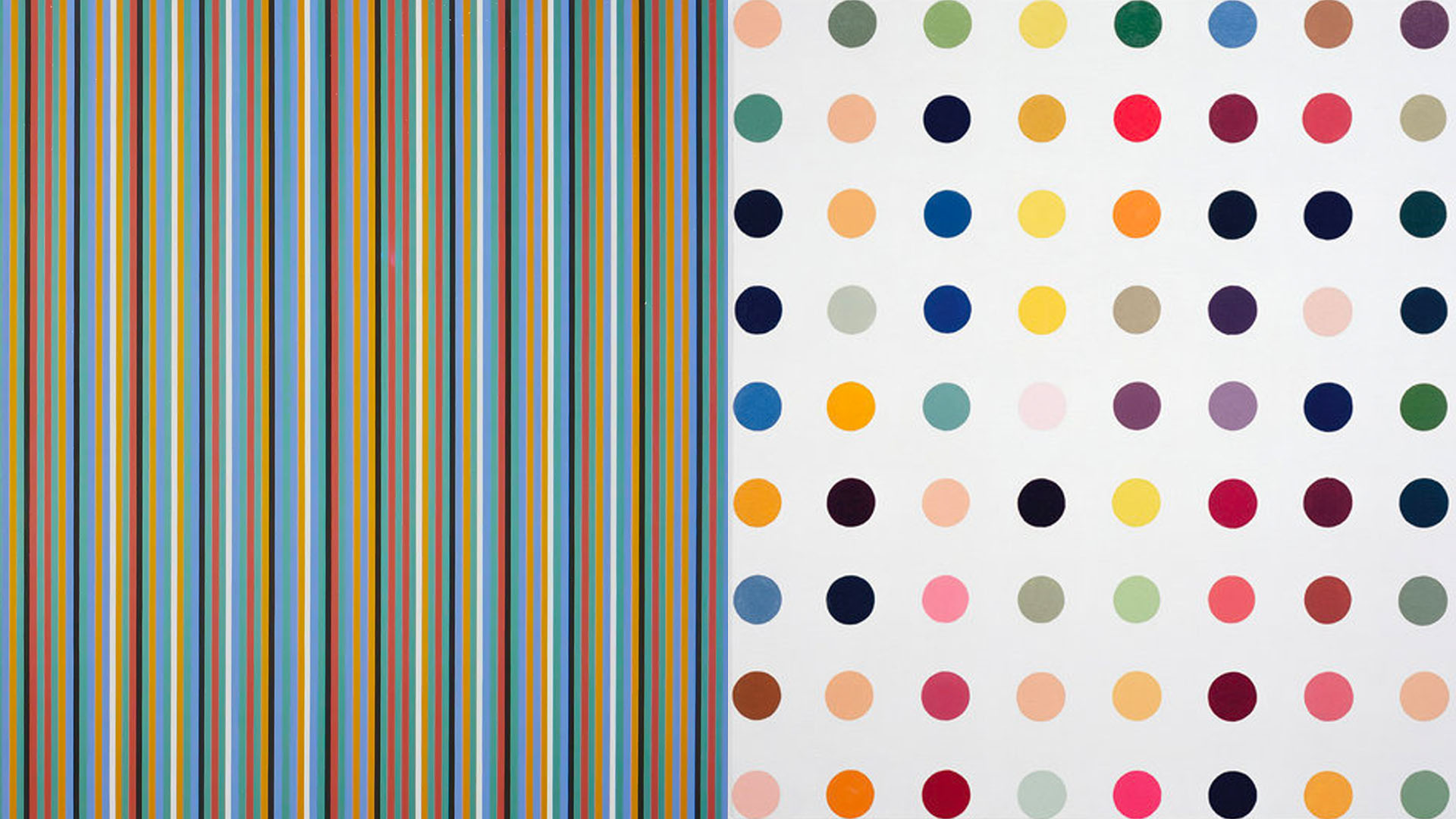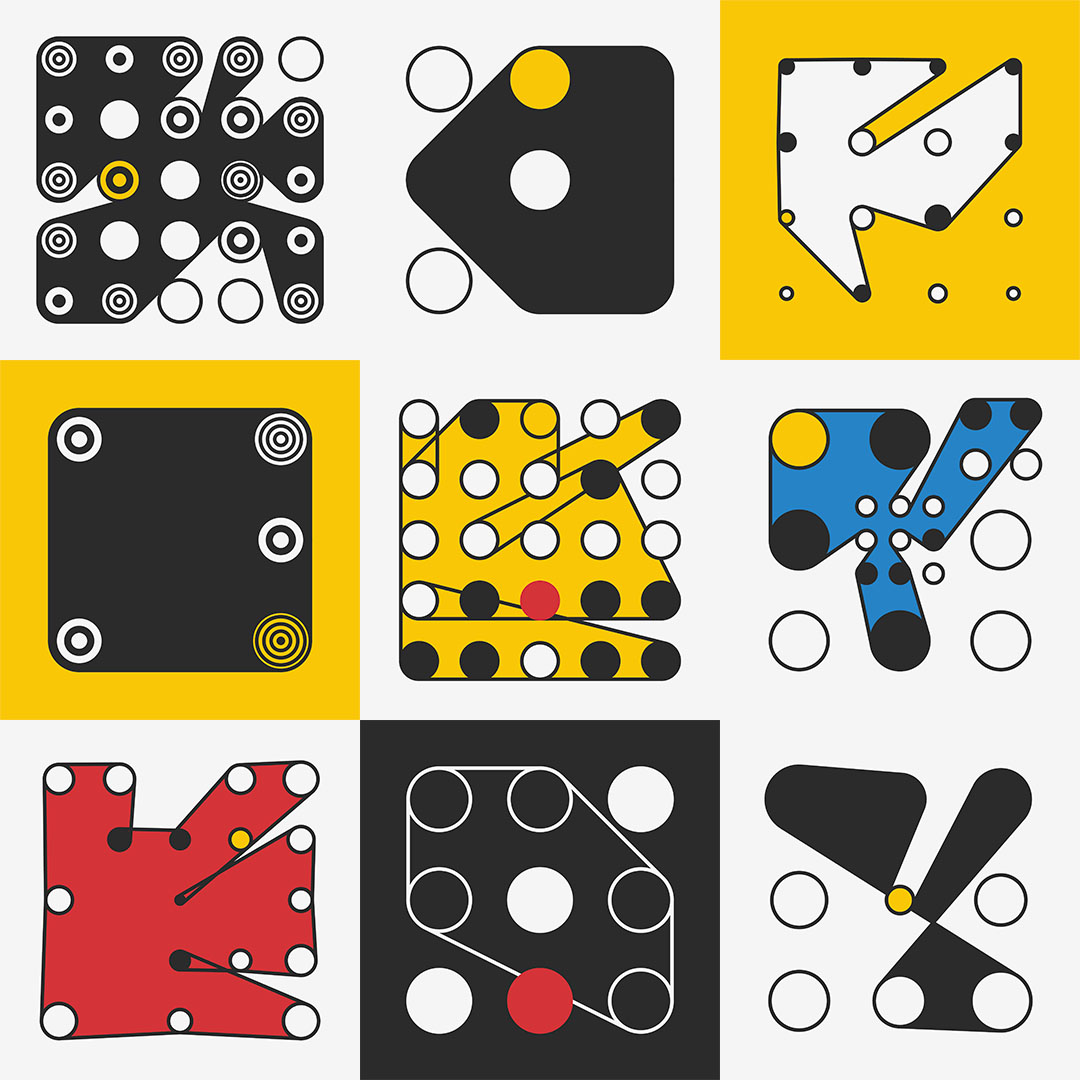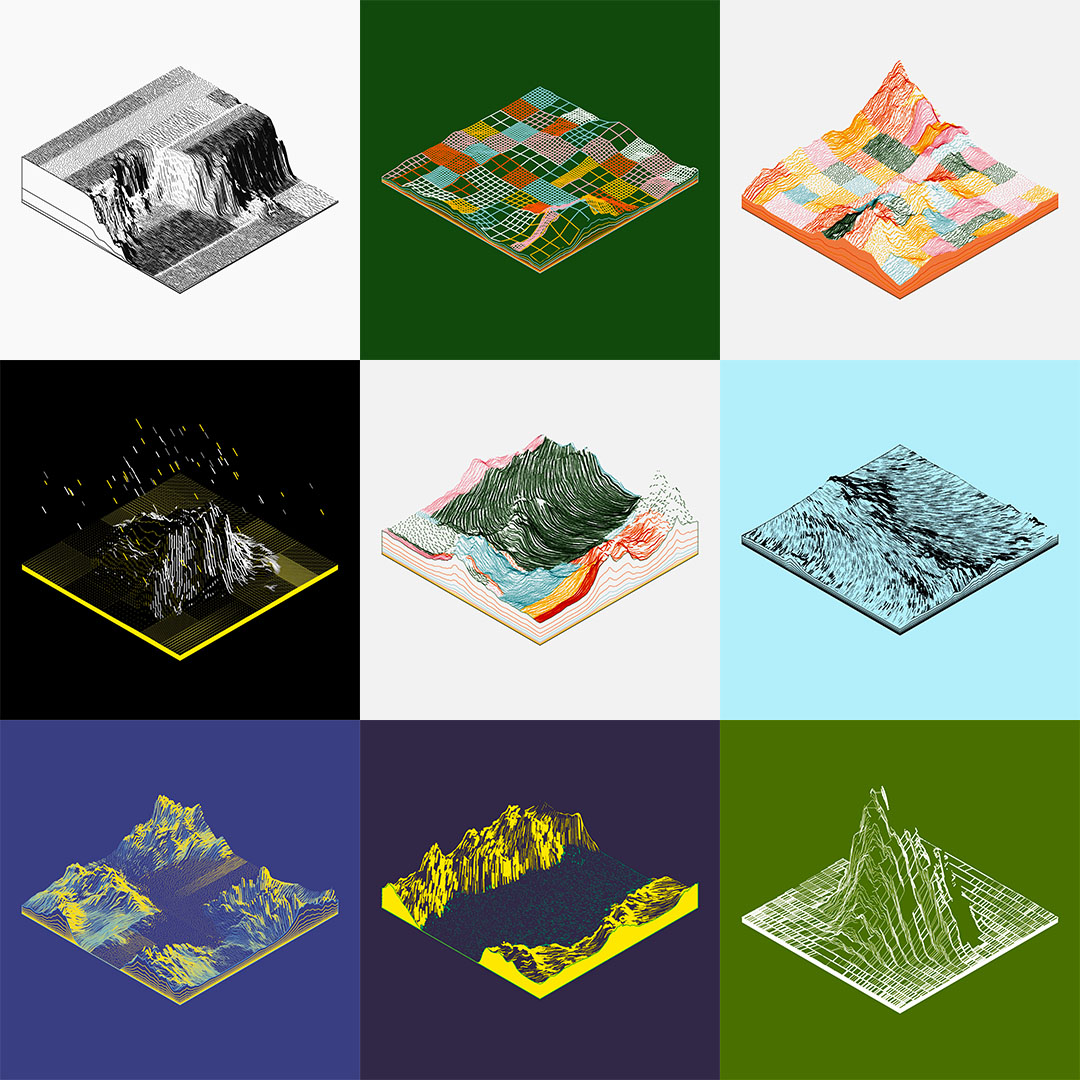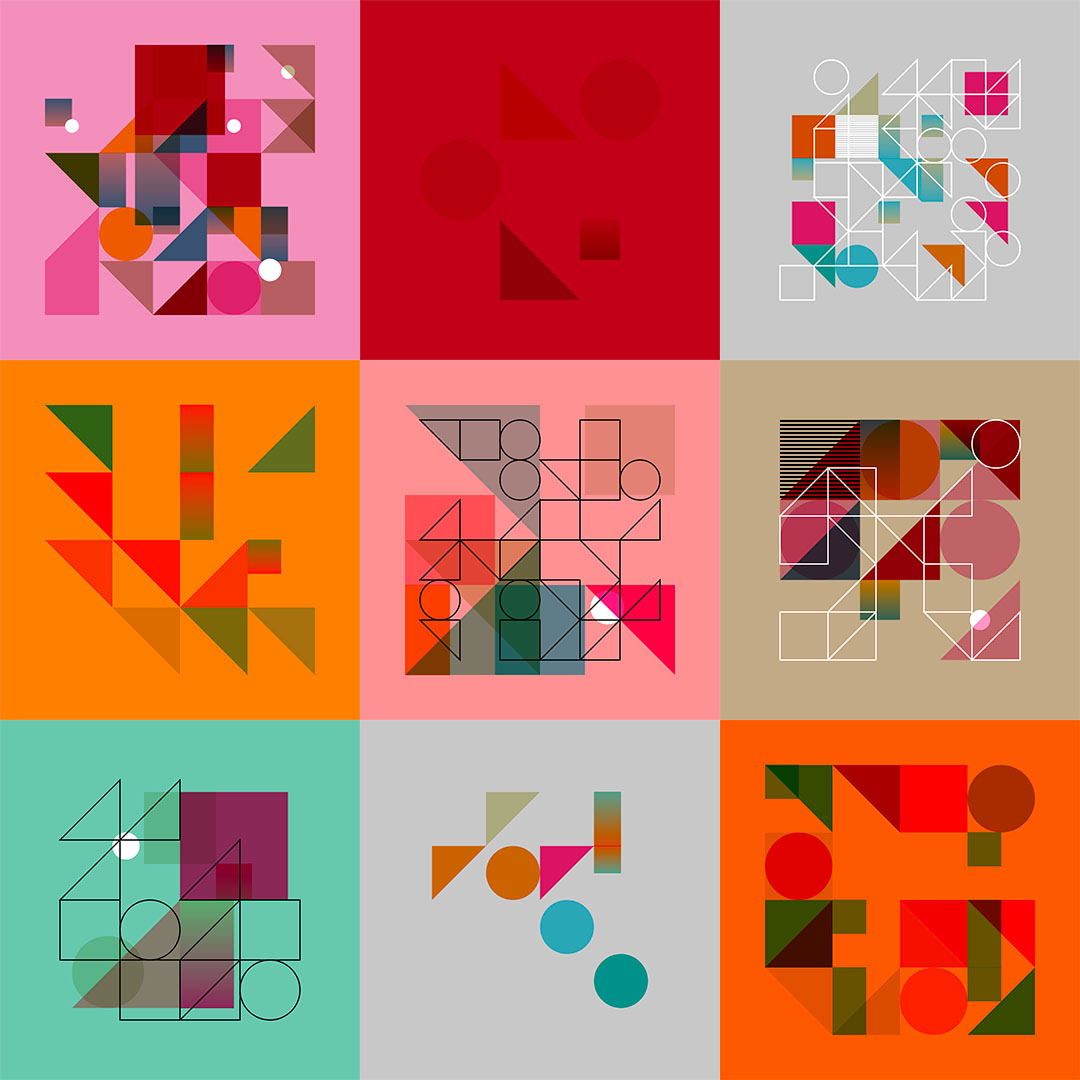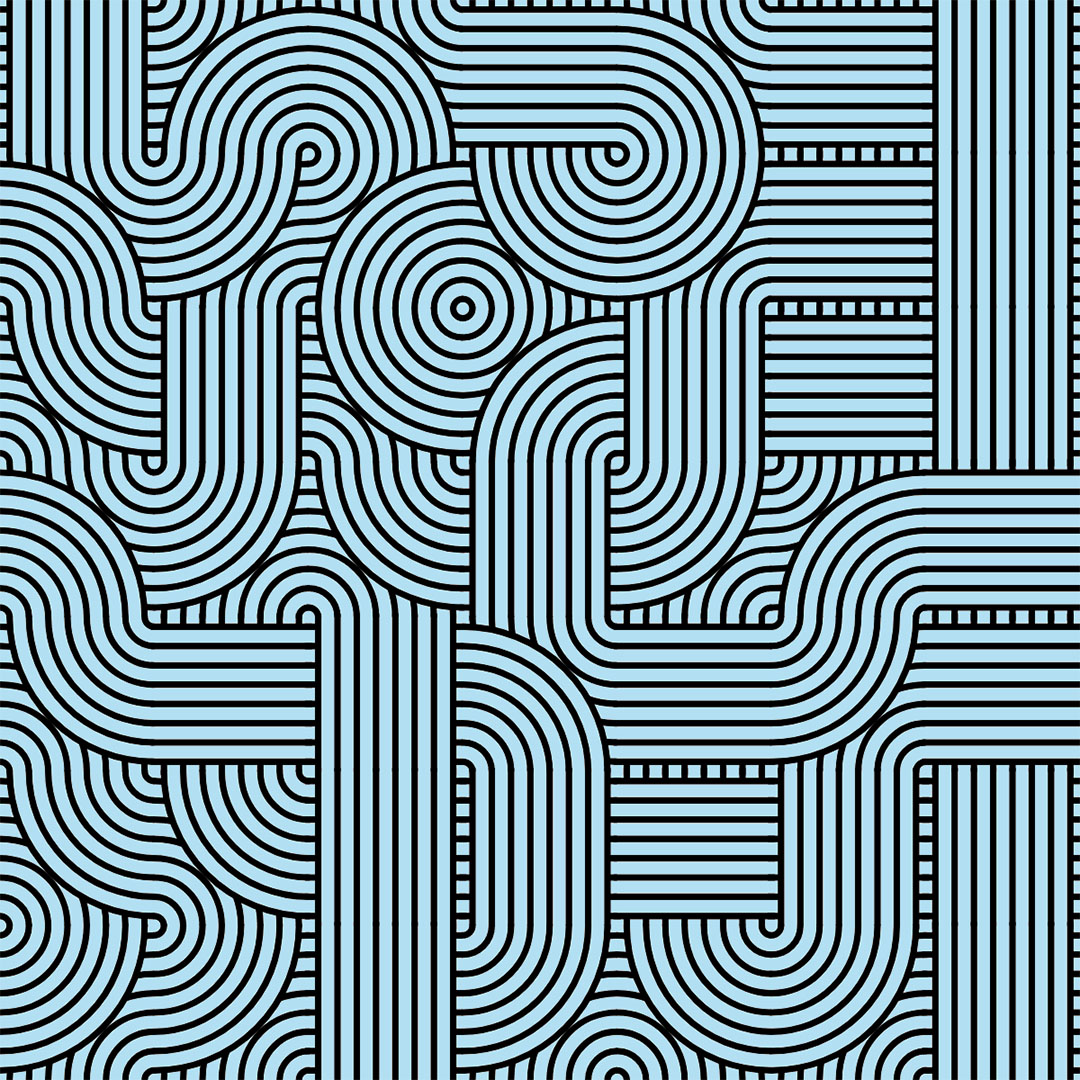Generative Art with Art Blocks, a new edge
I am, at heart, someone who likes to document things. I keep weeknotes, I've been reporting my profit/loss while pen plotting, I do blogging, and I've started a newsletter. All of which can be found over on revdancatt.com. It's one of the reasons I started working at Flickr way back in the day, and another reason why I try to post daily to Instagram. Things that don't go online go into a daily journal; basically, I track stuff.
So when I notice something "new", I like to document it, and that's what I'm going to be doing here. It's a small, but I think important new edge to Generative Art. I'm using "new" in inverted commas because while I do mean "is new to me", I also think it's new-new, but I know there'll be some "well actually" along with that. For this reason, I've added a "What do we mean by 'New'" section at the bottom.
tl;dr: the new thing is removing the curation step from the end of the generative art process.
This is how this post is going to go down. First, I want to put Generative Art into some context with the art world for people who are not familiar with it. Then I'll say what the "new edge" is, and finally, I'll try and justify that "new" label.
Generative Art, a very brief overview
There are many good articles about what Generative Art is; this is a fantastic one Why Love Generative Art? by Jason Bailey who's doing great writing about this whole area.
The angle I'm taking is somewhat defensively trying to explain where my artwork fits into the Generative Art fold, so I will cover areas that help explain that; this isn't an exhaustive GA article.
To do this, we're going to turn to three artists; Bridget Riley, Damien Hirst and Jackson Pollock.
Starting with both Riley and Hirst. These artists have created work that leans heavily on simple geometry, Riley with her stripes and Hirst with his spots.
I think it's fair to say that both of these artworks are visually "simple", although the thinking behind them isn't. Damien has this to say about his spots.
"mathematically, with the spot paintings, I probably discovered the most fundamentally important thing in any kind of art. Which is the harmony of where colour can exist on its own, interacting with other colours in a perfect format."
Riley also had her journey from black and white paintings to incorporating colours with her stripes, carefully picking which palette to use and the size and distribution of the stripes.
In both cases, the artist creates some rules for their studio technicians to follow, Riley with a strict order to her colours and Hirst with an order to not repeat any at all.
This is not Generative Art, but the rules, palette selection and "automation" in the form of studio assistants are there, and the results are unarguably art.
Of course, art defined by rules has been around for a long time. Many artists in the fields of painting, writing, poetry and music (to name a few) have created work that is a set of instructions to be followed. Most of the time, those following the rules are people, but sometimes they're computers.
Meanwhile, a quick look at Pollock.
[Pollock’s One: Number 31, 1950] [3]
We are all most likely familiar with the paint splashed work of Pollock. There are similarities to Hirst's work; both are using household paints. Hirst has his mixed to produce new colours, and Pollock uses what comes off the shelf.
But none the less he is still selecting the palette. This is what Pollock does control; the selection of paint colours, the initial size of the canvas and, while producing the work, where on the canvas he chooses to throw the paint.
What he doesn't control is how that paint finally lands, he can decide if he wishes to cast the red paint in only one area of the canvas, but the final form of that red paint is unknown.
Pollock gives over some of his work to randomness in a way that Riley doesn't.
Then there's one last step.
Pollock can either reject the whole canvas, accept it as it is, or select an area of the canvas to be cut out and called the final piece. Here Pollock is exercising some level of curation over the work. While there is randomness, decisions are still being made.
The role of curation in Generative Art
An extract from my own about page about the pen plotter artwork I do.
"My role as artist is to create using the language of code to generate lines, patterns, and forms in collaboration with the computer. And then interpret and manipulate the code to selectively 'breed' new shapes and designs that are aesthetically beautiful.
My process is organic and experimental. The interactions between plotter, pen, ink and paper can yield unexpected outcomes. Creating a piece of art that neither computer nor artist could have anticipated. Art becomes an industrial process, defined by algorithms, and part of a greater creative evolution – guided by me."
I lean heavily into curation. My rules are computer code, and the studio assistants are pen plotters (how their different quirks influence the final art is a whole separate blog post). I control the general effect I want, the stripes or spots, and then toss in an amount of randomness, the throwing of the paint.
With the pen plotter, I often (although not always) review the results before deciding if I should send it to the plotters to get drawn. Some works I decide are aesthetically pleasing, while others aren't at all.
The nature of code is that it can often produce (hundreds of) thousands of variations. Still, generative artists tend to only produce a final small selection, guided by artistic decisions and tweaks to the code.
There's a lot more to generative art, far more than I can cover in this short post. Still, I wanted to draw parallels between the ideas and processes that are definitely seen as art and what sometimes gets dismissed or not understood because it's "done by computer".
The creation of rules, a-la Riley and Hirst, the selection of palettes as in the case of Riley and Pollock, the introduction of randomness (Pollock), and the abstraction of the final artwork are all often seen in generative art. Finally, we also have the act of curation over each of those areas; rules, palettes, layout and final selection.
Which brings me onto the "new edge".
The new edge in Generative Art
This is it; the new thing I keep seeing that all the above was written to get us to.
No final curation step. All the final results from the generative art process must be good.
It may not seem like much, but it feels like a lot. I'm going to use my project, "70s Pop Series One", as an example. You can read more about that here: 70s Pop Series One, probability is my paint
Very briefly, I got to produce some work on the Art Blocks platform. The project works by writing some code that generates artworks. Because the same code creates each artwork, it all sits within the same "design space". However, each one is unique based on a "token" that gets fed into the code.
Here are some examples from other artists on the same platform.
3x3 Ringers by Dmitri Cherniak
3x3 Subscapes by Matt DesLauriers
3x3 Elementals by Michael Connolly
As an artist, I can control what the results may look like. That part is very intentional (see my 70s Pop post for more details), but I can't know precisely what any one piece will be.
I set the total number that can be created, test my code again and again, and then, to sell the artworks, I have to first commit that code to the blockchain (which cost me $1,840.85). Once that code is there, you can't change it, and if there are any bugs, they stay; there is no undo.
Next, you press a button that creates the first one.
That single artwork, the "Number zero" (mine is here: https://artblocks.io/token/46000000)...
...is then the face of the whole project. If your code created something bat-shit-ugly at that point, you're so out of luck. You could, in theory throw the entire project away, start afresh, toss another $1.8k at burning the code to the blockchain and press that button again, hoping for something better[4].
Then anyone who wants to buy one presses the "Purchase" button, pays some money, gets a token which goes into the algorithm machine and generates an artwork. The buyer doesn't get to see the artwork before they buy it, they can only see the previously created artworks, and then their own after the purchase is complete.
You have to trust that from your code every output will be good.
There is no final curation step.
This seems almost too trivial to document, and yet as an artist, it feels like a whole new step in generative art. I may be the only one who feels like this, but I can only write from experience.
I think this is an exciting new wrinkle in generative art, and Art Blocks will be seen as an important inflexion point.
What do we mean by "New".
Declaring something "New" is a risky business; there will always be examples of what you think of as "New" having been done somewhere before.
People will, of course, find examples of uncurated generative art going back years and years. I have two thoughts on "New" & ideas, one of which I talked about in my first newsletter, writing about where ideas come from. In that newsletter, I had this to say...
In her book [Elizabeth] Gilbert talks of ideas living in their own realm, looking for ways to break out, to find a "host" to occupy and help them manifest. Alan Moore has a similar concept with Ideaspace, where locations spread apart in both distance and time can be closely connected by ideas.
The Magic and Magick of Gilbert and Moore has a dimension inhabited by idea Daemons, stalking and pacing, biding their time, looking for a weak spot in the walls that separate them from us, and when they find one, they burst through. Because the land of "Ideaspace" is convoluted, joined by concepts rather than geography, London, New York, Tokyo and Shanghai are adjacent because we think of them together as major cities, it's possible for a Daemon, the idea, to step through at a single moment in time, but separated by a great distance.
When we, as artists, are struck with an idea, a pebble of thought rolling around in our head, we shouldn't be surprised when we see someone else do just that very thing.
The short version is that we shouldn't be surprised when the same "new" idea pops up in several places simultaneously; it just means it was the right time for that idea to happen. Sometimes an idea has previously tried to take hold but just didn't stick.
My second thought about new is that it looks something like drawing a circle.
If you take a piece of paper and a thick marker and draw a circle, that circle represents a thing, let's take watercolour landscape painting as an example. Watercolour landscape painting is a well established artistic process, which is represented by a large circle.
The vast majority of people painting landscapes with watercolours will now happily fit somewhere safely inside that circle. There's lots of variety within the loop, but very few people are making their marks right at the very edge of that circle. There will, however, be a few artists pushing at that circle's boundary; they are working so close to the edge of that circle that sometimes their mark goes a little outside of the very outer circle, creating a new edge.
The circle just got a tiny bit bigger.
If several people are all working at the very edge, each one will be pushing the boundary out a little further. The more they do it, the more established the new edge gets, the circle gets a little larger, and people now have this new edge to safely work within.
Sometimes the idea or technique is so new that it breaks out and starts its own small circle. These new circles or movements start by growing quickly; it's almost impossible to work within the new circle without hitting up against and creating a new edge.
After a while, it gets easier and easier to stay safely within the circle and more challenging but not impossible to expand the circle.
Once a circle is suitably large, the rate at which it grows slows, and it can be harder to notices these small pushes up against the edges unless you work within that field, and it's your job to notice those things.
So that's what I'm saying here when I say "new", it's the small barely noticeable pushing at the edge of an already large circle.
It feels to me that a platform like Art Blocks, where you permanently burn your generative artwork code onto the chain, don't get to curate the output and the resulting art collapses from its quantum state to reality after the purchase, is a new edge.
Controlled chance
There is a little more to all of this, but I mainly wanted to capture what I've seen as new.
The "little bit more" to this is how the artists are using controlled chance to design collections of 250, 500 or one thousand pieces.
I don't want anyone to think that this "new edge" is just artists going yolo; it's more about the extra thought and attention that has to go into everything because you no longer have the safety net of choosing what you show.
Probability becomes a major part of the artistic process.
My 70s Pop post goes into that in a little more detail, you can also read the guide to the rarity features in 70s Pop Series One which gives a good quick overview.
If you have any questions or comments, you can find me on Twitter @revdancatt and Instagram also @revdancatt.
[1] - Image from David Zwirner Books - Bridget Riley: The Stripe Paintings 1961-2014
[2] - Image from Damien Hirst - Agaricin - 1986-2011
[3] - Image from Jackson Pollock - One: Number 31, 1950
[4] - Technically you don't need to burn the code to the blockchain a second time. You could delete the project and start again reusing the code. However, from an artistic stance the idea is that the code only produces that limited collection of artworks, having a few false-starts doesn't fit in with the aim of the work.
🤖 🤖 🤖
